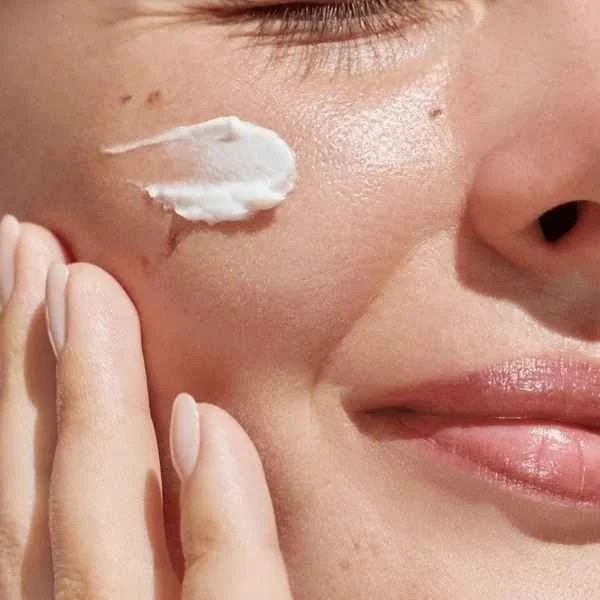Best Autumn and Winter Skincare Tips for Hydrated, Glowing Skin
As the seasons change and the temperatures drop, your skin condition and needs change too. The crisp chill in the air can strip moisture from your skin, leaving your complexion parched, dry, dull, and, in some cases, more sensitive than usual. That’s why recognising your skin changing and updating your skincare routine for autumn and winter is essential to keep your skin happy, hydrated, and glowing all season long.
From strengthening your skin barrier and preventing dehydration to choosing the right hydrating serums and rich moisturisers, these expert-approved autumn and winter skincare tips will help protect your complexion, prevent dryness, and maintain a radiant glow. Whatever your skin type, these simple seasonal swaps will keep your skin comfortable, supple, and beautifully balanced, no matter how low the temperatures drop.
What Happens to Your Skin in Autumn and Winter
Technically, the skin undergoes several physiological changes due to shifts in temperature and humidity. When the air becomes cooler and drier, there’s less moisture in the atmosphere, which means the cold, dry air pulls the moisture from your skin, and you lose water more quickly. This process, known as transepidermal water loss (TEWL), is why your skin feels dry, tight, and parched, and it is often more noticeable in autumn and winter.
The skin barrier, which is composed of lipids, ceramides, and fatty acids, also becomes more vulnerable during the colder months. Central heating, hot showers, cold temperatures, and harsh winds can all weaken this barrier, and left untreated, can lead to increased sensitivity, redness, and irritation.
Your skin can lack radiance when less oxygen and nutrients reach the surface, as circulation is affected by the cold outside. This can lead to a dull or sallow complexion.
Not everyone, but for many, the summer has left the skin starved of moisture, and the transition from summer to autumn is far greater than we ideally would like for the skin.
How to Adapt Your Skincare Routine for Colder Months
Cleanser
This is the step in your skincare routine that can often make the biggest impact without you realising it. Be mindful of how your skin feels after cleansing. If it feels tight or uncomfortable straight away (or even a few minutes later), it’s a sign your cleanser is too harsh and may be stripping your skin.
Switch to a gentle, hydrating cleanser that cleans effectively without compromising your skin barrier. Look for milky or cream textures that leave your skin soft, comfortable, and hydrated.
If you need help finding the best cleansing milk or cream for your skin type and budget, read here: The Best Milk and Cream Cleansers for Any Budget and Skin Type — Fiona Brackenbury
Exfoliation
Getting the balance right when exfoliating can be tricky; one minute your skin is glowing and glass-like, and the next you’ve overdone it and damaged the skin barrier and your skin.
Over-exfoliating can cause sensitivity, dryness, and breakouts, whilst under-exfoliating can limit the effectiveness of the rest of your skin care and leave the skin congested, dull, and lacking radiance and vitality. Don't just exfoliate your face; your body needs exfoliation too.
If you need help with gentle exfoliation that will leave your skin glowing, be sure to take a read here
Best Exfoliating Toners, Pads, Mists & Peels of 2025 — Fiona Brackenbury
Serums
When choosing serums, focus on your skin condition rather than your skin type, and consider your skin goals and how you want your skin to look in the future.
During the colder months, include hydrating, barrier-strengthening serums with ingredients like ceramides, hyaluronic acid, and peptides. These will keep the skin hydrated and plump.
Moisturiser
As temperatures drop, you’ll likely need to switch to a richer moisturiser or a barrier cream. Think of your day moisturiser as your skin’s coat; it locks in hydration and shields your skin from environmental stressors.
At night, choose formulas that focus more on barrier repair and strengthening with ceramides, cholesterol, and fatty acids.
SPF (Yes, Even in Winter!)
Your skin needs daily sunscreen year-round to protect the skin barrier and defend against UVA rays, which are present 365 days a year.
In the colder months, you might prefer a moisturiser with built-in SPF for ease, or you can layer your products to maximise hydration and protection. The key is consistency: SPF every single day.
Expert Skincare Tips for Autumn and Winter
Here are my professional skincare expert tips to help keep your skin happy, hydrated, and glowing while maintaining a strong skin barrier.
1. Add a Hydrating Mist or Essence
A hydrating mist or essence is a brilliant way to give your skin a boost of moisture. Apply essences in the morning or evening to flood the skin with hydration, or use a mist between your morning and evening routines to boost the hydration levels. Keep one on your desk or in your bag to refresh your complexion whenever your skin feels tight or dry.
If you need help finding the best essence for your skin, you might find this post helpful: Do You Really Need an Essence?
2. Switch Your Toner
Milky toners bring instant comfort to the skin and immediately help replenish lost moisture and hydration. They’re especially beneficial in autumn and winter when the skin needs extra soothing and nourishment.
If you need help finding the right milky toner for your skin, take a read here:
Best Milky Toners — Fiona Brackenbury
3. Buffer Your Skincare Actives
You don’t have to stop using your actives during the colder months, but you may need to adjust how you apply them. If you find your skin is struggling to retain moisture or feeling more sensitive than usual, try the “skincare sandwich” technique.
Apply a layer of moisturiser first, then your active (such as retinol or exfoliating acids), and finish with another layer of moisturiser. This helps to buffer the strength of the active, reduce potential irritation, and keep your skin barrier healthy and hydrated.
4. Use a Humidifier
Heating can make the air in your home or work extremely dry, and when the air is so dry, this pulls moisture from your skin. Running a humidifier helps add hydration back into the air, supporting your skin barrier whilst keeping your skin feeling comfortable and looking dewy.
5. Apply Lip Care and Hand Creams Regularly
Your lips and hands are often the first areas to show signs of dryness during the colder months. When it comes to your hands, it’s those pesky hangnails, the dry, hard bits of skin around the cuticles, and if you pull them, they can cause instant damage to the cuticles and surrounding skin.
Keep nourishing lip balms and hand creams close by, and reapply throughout the day to prevent chapping, protect the skin barrier, and keep your hands and lips soft, smooth, and comfortable.
6. Layer Your Skincare from Lightest to Heaviest
As temperatures drop, layering is key to making the most of your products. Always apply skincare products in order of texture, from lightest (toners, essences, serums) to heaviest (creams and oils). This helps each layer absorb properly and locks in hydration more effectively.
7. Avoid Dehydrating Products
Steer clear of products that strip or dry out your skin, such as clay masks, alcohol-heavy setting sprays, and heavy loose powders. These can suck the surface hydration and moisture from the skin and lead to increased dryness, irritation, or dullness.
8. Common Mistakes to Avoid
Use hot water for cleansing, showering, and bathing.
Skipping SPF in cloudy weather.
Over-exfoliating.
Not listening to your skin and adjusting products seasonally.
Taking a sauna and steam with no moisturiser on
9. Check In on Your Skin
Throughout the day, take a moment to notice how your skin feels. Any sign of tightness or that “thirsty” feeling indicates that your skin’s surface hydration levels are dropping.
Dehydration can have a huge knock-on effect on the health and performance of your skin, impacting everything from barrier strength to the performance of other skin cells like collagen. I recommend checking in after cleansing, around midday, and again mid-afternoon. This simple habit helps you understand when your skin needs a little extra hydration or care.
10. The Skincare Recipe: H.E.O
Humectants, Emollients, and Occlusives: these three are the ultimate recipe for hydrated, moisturised, and happy skin with a strong skin barrier.
Humectants are your hydration heroes; they draw water into the skin, keeping it plump and supple. Ingredients like hyaluronic acid and glycerin are excellent
Emollients help to fill in the gaps between skin cells, smoothing the surface and restoring softness. These are often found in serums and facial oils that deliver instant comfort and nourishment
Occlusives act as a protective seal, locking in all that hydration and preventing moisture loss. This is where a well-formulated moisturiser really shines, creating the perfect finishing layer for your routine.
When your skincare routine includes the right balance of all three, your skin stays hydrated, strong, and glowing even through the harshest winter weather.
Thanks for reading
I hope you found this review helpful! As a small independent business, using these links helps me keep my website running and continue to provide these blogs for you. I’m often asked how you can thank me for my skincare advice - using these links is very much appreciated. Thank you for being part of this amazing journey with me!
Links may be affiliated links which means that if you make a purchase though one of our links we receive a small commission which helps support and run this website.







